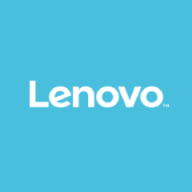

Dell PowerFlex and Lenovo ThinkAgile VX Series are competitors in the hyper-converged infrastructure market. Lenovo ThinkAgile VX Series is known for its advanced features, while Dell PowerFlex is preferred for its pricing and support, offering greater overall value.
Features: Dell PowerFlex is notable for its scalability and flexibility, catering to dynamic and diverse IT environments. It offers simplicity in configuration and management, making it suitable for adaptable enterprise solutions. Lenovo ThinkAgile VX Series focuses on operational efficiency with its integrated software-defined features, providing robust, all-in-one solutions. The primary difference is Lenovo's integrated approach versus Dell's flexibility and scalability.
Ease of Deployment and Customer Service: Lenovo ThinkAgile VX Series allows quick and efficient deployment through integrated systems and simplified processes, supporting rapid scalability. It provides consistent customer support centered on seamless integration. Dell PowerFlex is known for comprehensive support services, guiding customers throughout deployment with flexibility to meet specific needs. Lenovo emphasizes efficiency and rapid deployment, while Dell focuses on flexibility and detailed support.
Pricing and ROI: Dell PowerFlex offers competitive setup costs, delivering substantial long-term ROI with its flexible, scalable infrastructure, reducing overhead and adapting to growth demands. Lenovo ThinkAgile VX Series requires a higher initial investment, justified by its efficiencies and integrated solutions, promising balanced ROI through feature richness and efficiency gains. Dell is favored for cost-effectiveness, while Lenovo can justify its expense with integration and long-term benefits.
| Product | Market Share (%) |
|---|---|
| Dell PowerFlex | 9.3% |
| Lenovo ThinkAgile VX Series | 1.4% |
| Other | 89.3% |


| Company Size | Count |
|---|---|
| Small Business | 8 |
| Midsize Enterprise | 8 |
| Large Enterprise | 15 |
Dell PowerFlex is a software-defined storage infrastructure delivering modern architecture and versatile deployment for on-premises or cloud. It achieves high performance, scalable storage, and workload consolidation through advanced automation.
PowerFlex's VMware compatibility ensures seamless integration, offering flexibility in compute and storage scaling. With its hyper-converged infrastructure, it caters to AI, cloud, and database environments, providing robust automation, resilience, and security. Flexible deployment options are complemented by a single-window management system, prioritizing cost optimization. However, enhancements are needed in monitoring tools, user interface, and AI functionality. Migration from Hyper-V and licensing flexibility also require attention, while improved documentation could simplify usage. Integration with services and streamlined upgrade processes are essential.
What are the key features of Dell PowerFlex?PowerFlex is essential in industries requiring support for mission-critical workloads and large-scale applications. It is instrumental for deploying storage, compute nodes, hyper-converged infrastructure, and private clouds. The platform integrates compute, storage, and networking, optimizing performance for modern applications like AI video analytics and disaster recovery.
Differentiating yourself from the competition is vital in today’s fast-moving business environment. To support your business, IT systems must be simple, agile, and cost-effective so you can meet your customers’ requirements to be ever online. Lenovo ThinkAgile VX Series enables you to meet these requirements by focusing on the business outcome you require, rather than on building your infrastructure.
ThinkAgile VX Series, powered by VMware vSAN, is available in several models. Each is preconfigured, pretested, and optimized to provide the simplest way to bring a new VMware hyperconverged environment online. If you have an existing VMware environment, the VX Series can integrate into it easily.
Designed for any size business from SMBs through large enterprises, VX Series can be used as infrastructure for remote office/branch office (ROBO) and retail stores as well as virtual desktop infrastructure (VDI) and enterprise applications.
We monitor all HCI reviews to prevent fraudulent reviews and keep review quality high. We do not post reviews by company employees or direct competitors. We validate each review for authenticity via cross-reference with LinkedIn, and personal follow-up with the reviewer when necessary.